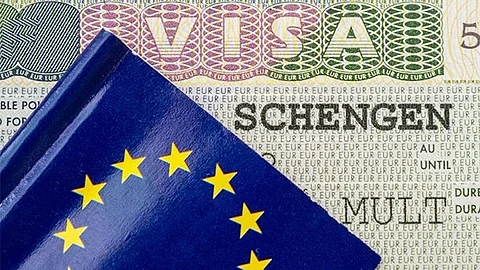

The European Union is set to transform the way travelers obtain Schengen visas, moving to a completely digital system that will eliminate traditional paper applications and physical visa stickers by 2028. This major overhaul promises to streamline the application process and enhance security measures.
Schengen visa allows non- EU nationals to travel within the Schengen Area, which consists of a group of 29 European countries, for stays of up to 90 days within a 180-day period.
According to a report by The Economic Times, the new system will replace the familiar visa sticker with a secure, encrypted 2D digital barcode, marking a significant leap toward technological innovation in travel documentation.
The digital transformation got its first real-world test during the 2024 Paris Olympics, where France successfully issued 70,000 digital Schengen visas featuring barcodes. Under the new system, travelers will simply scan these barcodes at border checkpoints, giving immigration officials instant access to personal and visa information through a centralized EU database.
The fully online experience will allow applicants to upload required documents, track their application status in real-time, and complete fee payments digitally. Once approved, travelers receive a digitally signed barcode visa. While first-time visitors to Europe must still provide biometric data in person, subsequent applications will follow a more streamlined process.
Embassy selection: Applicants must choose the embassy of their primary destination country. For multi-country trips, apply through the nation where you'll spend the most time, or if time is equal, the first country of entry. Most countries work with VFS Global, though Spain uses BLS International in India, and France requires appointments through its Démarches Simplifiées platform.
Document requirements: Essential documents include a valid passport with six months validity and two blank pages, the completed application form, photographs, travel insurance with minimum €30,000 coverage, flight and accommodation bookings, a cover letter, and financial documentation including 3-6 months of bank statements and salary slips or International Transaction Reporting System (ITRs).
Biometric data collection: First-time applicants must provide fingerprints and photographs, with data stored in the EU's Visa Information System. This requirement is waived if biometric information was collected within the previous 59 months.
Fee structure: Standard visa fees remain at approximately €80 for adults and €40 for children aged 6-12, with no charge for those under 6. Service fees through VFS or BLS range from ₹1,800 to Rs 2,200.
Processing timeline: Typical processing takes 15 calendar days, though this can extend to 30 or 60 days during busy periods or for complex applications.
Experts recommend applying 30-60 days before travel, as applications are accepted up to six months in advance. However, last-minute applications within 15 working days should be avoided to minimise delay risks.
For faster processing, consider applying through embassies like Lithuania, Latvia, or Estonia, which often complete reviews within 7-10 days and maintain lower rejection rates.
Some embassies, particularly Germany and France, may require in-person interviews. Applicants should be prepared to clearly explain their travel itinerary, financial situation, and intention to return to India.
A significant change affects German visa applications: starting July 1, 2025, Germany eliminated informal appeals, requiring all rejected applications to go through formal legal procedures.
Indian nationals who have successfully used two Schengen visas within three years may now qualify for multi-year validity visas (2 or 5 years) under the EU's "cascade" regime, offering greater convenience for frequent travelers.
The digital transformation represents the EU's commitment to modernizing travel processes while maintaining security standards, promising a more efficient experience for millions of travelers worldwide.
